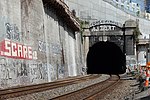Discovery Institute
Conservative organizations in the United StatesDiscovery InstituteFaith and theology think tanks in the United StatesIntelligent design movementIntelligent design organizations ... and 6 more
Non-profit organizations based in SeattlePolitical and economic think tanks in the United StatesPseudoscienceRight-wing politics in the United StatesThink tanks established in 1990Use mdy dates from December 2015
The Discovery Institute (DI) is a politically conservative non-profit think tank based in Seattle, Washington, that advocates the pseudoscientific concept of intelligent design (ID). It was founded in 1990 as a non-profit offshoot of the Hudson Institute. Its "Teach the Controversy" campaign aims to permit the teaching of anti-evolution, intelligent-design beliefs in United States public high school science courses in place of accepted scientific theories, positing that a scientific controversy exists over these subjects when in fact there is none.
Excerpt from the Wikipedia article Discovery Institute (License: CC BY-SA 3.0, Authors).Discovery Institute
Columbia Street, Seattle First Hill
Geographical coordinates (GPS) Address Nearby Places Show on map
Geographical coordinates (GPS)
| Latitude | Longitude |
|---|---|
| N 47.604027777778 ° | E -122.33344444444 ° |
Address
Columbia Street
98164 Seattle, First Hill
Washington, United States
Open on Google Maps









